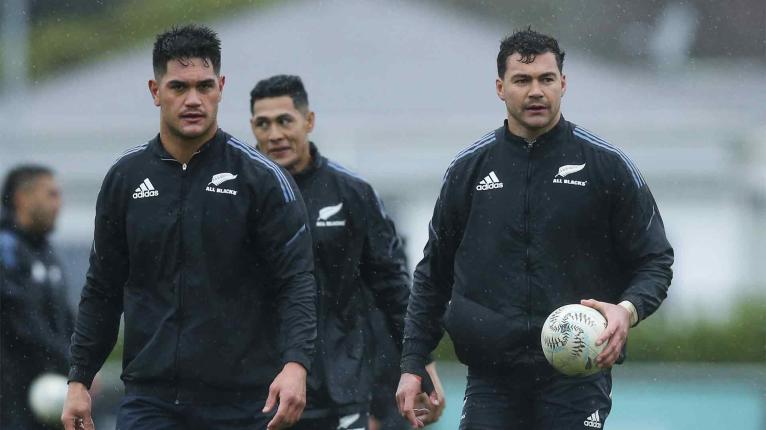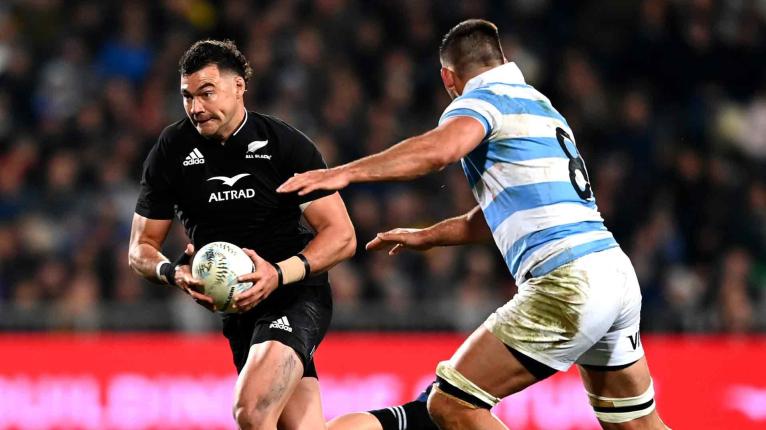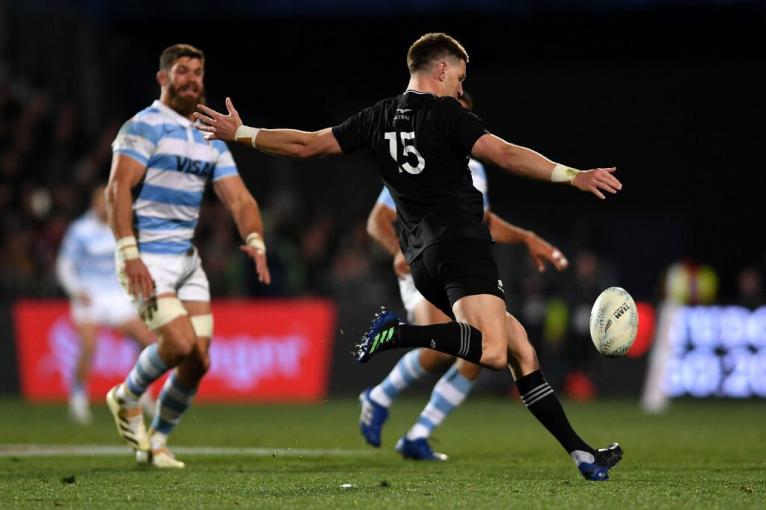When New Zealand took on Australia at Eden Park over the weekend, it was the first time under Ian Foster’s reign that the All Blacks had a man in the No 12 jersey who could actually play to the head coach’s design.
That doesn’t necessarily mean that Foster will persist with Jordie Barrett in the midfield, however – no matter how effective his shift from fullback was.
Anton Lienert-Brown, David Havili and Quinn Tupaea have all been trialled in the inside centre role since Foster took over following the 2019 Rugby World Cup (while Roger Tuivasa-Sheck has also been given a handful of minutes off the bench).
Not one of those three players possesses the skillset and frame that Foster has deemed necessary to carry out the duties of a second five-eighth, however.
What Havili boasts in playmaking ability, he lacks in physicality. Tupaea is the opposite; he’s capable of trucking the ball up in the midfield to generate some crucial go-forward but possesses no kicking game to speak of and isn’t able to take any responsibilities off the hands of the man wearing the No 10 jersey.

Lienert-Brown falls somewhere in the in-between and while he will undoubtedly make a return to the All Blacks midfield upon his return to full fitness, it shouldn’t be at No 12.
Barrett, on the other hand, can be everything that Foster wants from his inside centre and while there have been calls to hand the 25-year-old a shot in the role for the past few years, his performance at Eden Park vindicated the long-held belief that he could be a world-class midfielder, if only given a chance.
But first, to the man he replaced on Saturday: David Havili.
Havili’s two most recent performances in a black jersey were probably the best of his career, with the fullback-cum-centre getting the opportunity to utilise his full bag of tricks against Argentina and Australia instead of simply being asked to carry the ball into the traffic.
Havili is clearly an incredibly skilled individual and when given the chance to showcase those talents, he starts to look like a man who could genuinely be a long-term option in the midfield for the All Blacks.
His deft passing was used to excellent effect against Los Pumas, setting up two tries with his soft hands, while his short-kicking game asked many questions of the All Blacks’ opposition in both Hamilton and Melbourne:
The latter skill is one that few players in New Zealand are able to successfully execute on the fly – and even fewer players who don’t customarily wear the No 10 jersey.
Havili is clearly an incredibly skilled individual and when given the chance to showcase those talents, he starts to look like a man who could genuinely be a long-term option in the midfield for the All Blacks.
It’s only in recent weeks that Havili has actually been presented with those opportunities, however – when facing off with somewhat less reputable opposition. That’s not to downplay the current abilities of either Argentina or Australia but neither of those two sides is likely to be lifting the William Webb Ellis Cup in a year’s time, and Foster has so far shown an unwillingness to waver from the strategy of running a small man into some big defenders when up against the likes of Ireland and South Africa.

Perhaps that’s just a ploy from Foster to not give too much information away ahead of next year’s flagship tournament – but that might be an overly generous interpretation.
If Foster does want a ball-runner in the midfield who can also bring some playmaking to the fore, however, then Barrett’s performance against the Wallabies was the yardstick that everyone needs to be measured against moving forward.
With ball in hand, Barrett carved through 83 metres – the third-most of any NZ player on the night. It was his work in traffic that was most important, however, with the sizeable utility back managing to throw his weight around to good effect:
Barrett finished the game with the most beaten defenders (7) and offloads (4) of any player on the park while he also topped the tackle charts for the New Zealand backs, making a couple of big hits on forwards close to the breakdown.
His boot was also put to good use and worked well in tandem with his older brother at fullback as well as No 10 Richie Mo’unga.
I still love him as a 15, but are we willing to consider some option at 12? Well, yes we are.
Ian Foster on Jordie Barrett
All that being said, there’s nothing to suggest that Barrett’s capabilities in the midfield were ever under question by Foster.
“Has it piqued my interest? I’m always interested in what teams are doing,” Foster told the New Zealand Herald earlier this year after Barrett shifted to the centres for the Hurricanes during Super Rugby Pacific.
“Jordie and I have spoken about it. If it’s the right thing for the (Hurricanes) we understand that but it probably doesn’t change our plans too much.”
Foster reiterated his position the following month: “I’m interested to see … whether it’s an option for us long-term because it might become one, but I guess the clue that I’d give you is that I thought he was one of our best All Blacks last year.
“His goal-kicking, his high ball stuff, kicking, if you start thinking about World Cups, France, big stadiums, low-risk teams playing, then you have to have a back three that defuses high balls, has a kicking game and is strong defensively.
“He ticks those boxes. I still love him as a 15, but are we willing to consider some option at 12? Well, yes we are.”

Foster was effectively suggesting that it doesn’t really matter what Barrett offers in the midfield because he plays such an integral role at fullback, especially against the likes of South Africa and the Northern Hemisphere sides.
If Barrett hadn’t been perched at the back in Johannesburg earlier this year, would the All Blacks have been able to grab an unlikely 35-23 win? Time and time again the Springboks peppered the 25-year-old with high balls and time and time again Barrett took them with consummate ease. While the likes of Damian McKenzie, Beauden Barrett and potentially even Will Jordan are perhaps more capable of sparking attacks from the backfield, they’re yet to prove themselves as exceptionally reliable options under the high ball and Foster – or any coach – would be nervous heading into a World Cup knockout game against the likes of South Africa or Ireland without someone they can trust at fullback.
If Barrett is to make the permanent switch to the midfield then Foster will need to ensure he’s able to fully understand the nuisances of the role before France 2023 while also nailing down their first-choice fullback – one who’s as safe as houses when it comes to defusing the inevitable flurry of high balls that will come his way at various stages throughout the flagship event. The former task seems very doable – Barrett has already shown immense potential in the No 12 jersey. The latter challenge appears far more difficult, however.
Beauden Barrett was used at fullback throughout the 2019 tournament and while his performances certainly weren’t at fault for New Zealand eventually crashing out of the competition at the semi-final stages, the backline never quite had the balance that the All Blacks coaches would have been looking for. Now, three years later, will Foster look to a similar set-up? Richie Mo’unga has undoubtedly matured as a player and is perhaps more capable of bossing the backline around the park than he was in 2019, even with Barrett on the pitch, but there are certainly risks involved.
Jordie Barrett’s performance against the Wallabies naturally had many New Zealand fans salivating at the thought of finally having a jack-of-all-trades back in the No 12 jersey for the first time since Ma’a Nonu called time on his All Blacks career following the 2015 World Cup, but a shift to the midfield from his traditional fullback role will create new challenges for Ian Foster – challenges that may not justify a permanent change-up.



Jordie to 12, ALB to 13, Rieko and Sevu to the Wings, Jordan at 15 and BB off the bench for 30 mins
Try RTS at fullback.